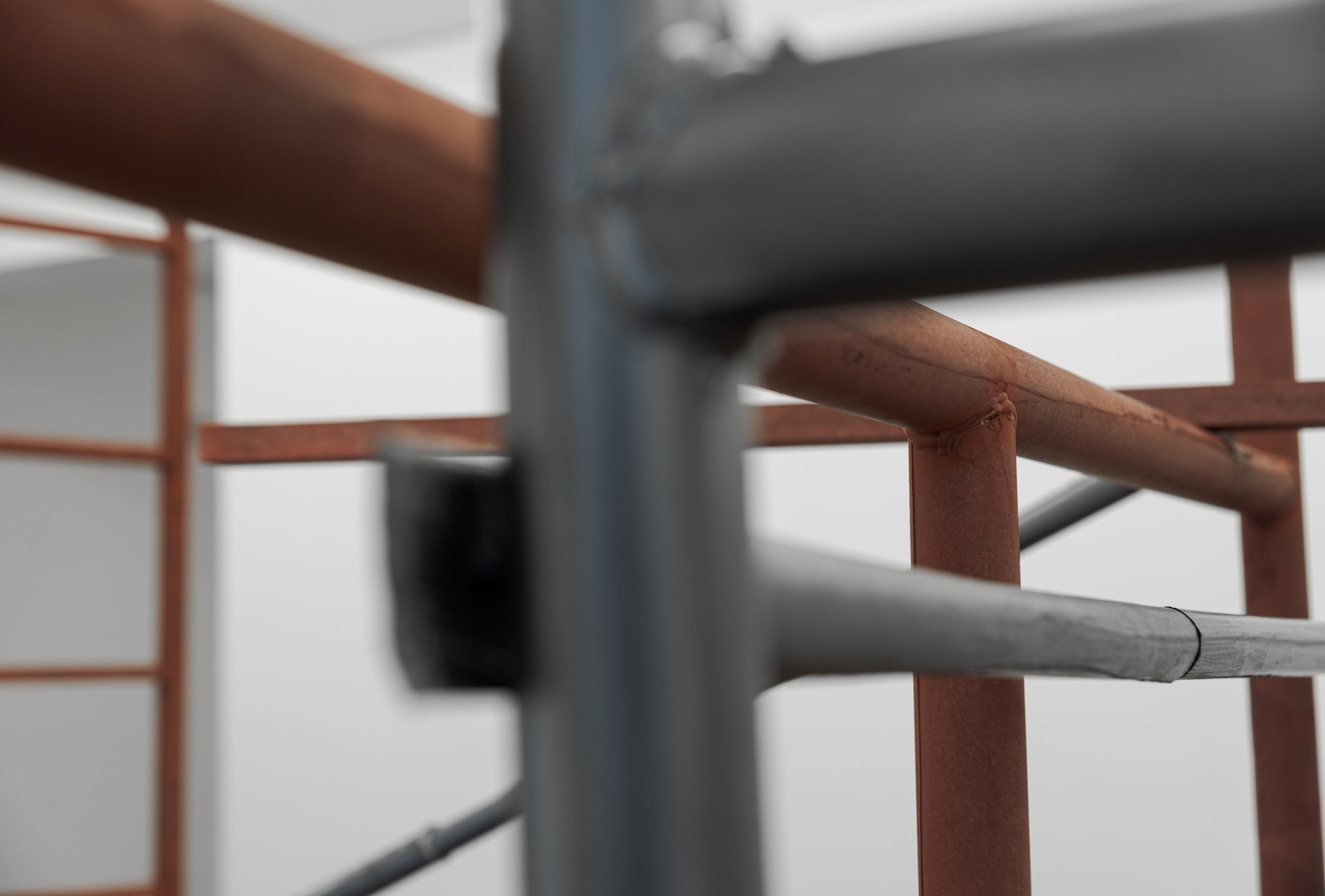MAURO GIACONI: UN POCO CON TUS OJOS [A LITTLE WITH YOUR EYES]
27 APRIL - 24 JUNE[A Little With Your Eyes]
Humming a melody, remembering the lyrics of that song, repeating its rhythm by drumming our fingers, whistling quietly while we walk or perform a monotonous task… small gestures that we do in a disguised way, trying not to reveal our intentions or thoughts.
[Mmm mmmm mmmm mmmm
Tititi ti tititi tititi tiiit tiit tiit]
Realizing that the lyrics of a song remind us of another moment, another action that was important and remains dormant in our memory. Hearing or reading that phrase or that title in another discourse and knowing that we surely share a common imaginary with the one who says or writes that now decontextualized verse.
-Do you remember: “como si fosse solido” na na na na na na na na?
-Ahhh, yes, Chico Buarque! “Construção”! [1]
-It’s a song that seemed like a dark premonition for all of America.
-Like the songs by Chilenean Violeta Parra [seiscientos gramos un kilo (six hundred grams one kilo)][2], a reality that will later be updated by Víctor Jara [mi canto es de los andamios (my song is from the scaffolding)][3]
It was the reality for many who had to leave their homes, hide their ideals, and build new realities in other places. Exiles, who go and return as Benedetti tells us in his novel Andamios.
To pretend you know a song. To sing it clandestinely. To live undercover in order to survive. Not being what you look like. To camouflage the soul, but also to camouflage the weapon.
Scaffolding, those temporary structures, fragile and light in appearance, but with firm anchorages. Their use was first documented a thousand years B.C., when erected by Chinese armies to massively assault enemy walls. Although, somehow, there must have been other frames to lift stones, to raise walls of large buildings symbolic of great powers, such as the pyramids.
But it is the worker who climbed and continues to climb the scaffolding. It is the fragile and light labor force. It is also the field for the anarchist struggle, the construction that looks like destruction. Emma Goldman was the number one public enemy of E. Hoover, head of the FBI. She defined “Word as weapon”. She argued that “A perfect personality, therefore, is only possible in a social state where man is free to choose the mode of work, the conditions of work, and the freedom to work. A society for which the making of a table, the building of a house, or tilling the soil, is what painting is to the artist or discovery is to the scientist; the result of inspiration, of intense longing, and deep interest in labor as a creative force. That being the ideal of anarchism, the economic organization must consist of a voluntary association of production and distribution, gradually developed within a libertarian communism, the best means of producing with the least expenditure of human energy. Anarchism, however, equally recognizes the right of the individual, or a group of individuals, to fix at any time other forms of labor, in harmony with their tastes and desires.“[4].
Solid ideals that in Latin America dissolved in the air. Argentina[5] and Uruguay[6] migrated in order not to be disappeared. And sometimes to return, and to feel that “si ustedes son la patria, yo soy extranjero (if you are the homeland, I am a foreigner)”[7].
To pretend you know a song. To sing it clandestinely. To live undercover in order to survive. Not being what you look like. To camouflage the soul, but also to camouflage the weapon.
We share being daughters of this struggle, being heirs and at the same time migrant organisms in transit, disguised. Growing up surrounded by stories that could not be told publicly, with songs that were sung softly. Growing up with critical awareness, knowing that the gesture is necessary for the possibility of overcoming. Even if it seems, like art, to have a certain degree of senselessness:
“El futuro llegó hace rato
Todo un palo, ya lo ves
Veámoslo un poco con tus ojos
El futuro ya llegó
(The future arrived a long time ago
Quite a stick, you see
Let’s see it a little with your eyes
The future has arrived)”[8]
Now, in the present that is the future, Giaconi makes the fragile solid, shows what we need to be seen, with the resources we have at hand, to hack the system, to transform the consensus of perception, also on the material: scaffolding made of graphite and paper.
Not being what you look like. To camouflage the soul, but also to camouflage the weapon.
This strategy that he already did with bags that looked like stones, with utensils and vessels presented as if they were archaeological remains made of bread, with fake rubble among the real debris of an earthquake, with clay tools… is that of all objects that function as a hidden metaphor, resistant and resilient presence in the same thing, like sleeper cells for a future revolution. An arsenal of camouflaged poetic tools in which the tools of the master are symbolically taken[9].
It makes you want to stop looking at the structure from the outside. It makes you want to grab the metal pipe and make it resonate on the scaffolding and on the stairs. It makes you want to, from that center in which we can penetrate to get lost in the reading, put together all the lyrics of an imaginary that sneaks between the drawings on old libertarian newspapers and printing proofs.
As in the work songs, to raise our voice collectively. Attempting to liberate the “general intellect” as Zizek claims[10] to solve the communist irresolution and have everything new to do, beyond capitalism.
Mauro tells me that he has also written it in his notes for the exhibition:
“Singing in unison that if sung louder could become a reality”.
And so, from the hushed whisper, a little with your eyes, come to sing together.
Marta Ramos-Yzquierdo
in dialogue with the exhibition “Un poco con tus ojos” by Mauro Giaconi, Galería NF/
NIEVES FERNANDEZ, April 2023.
[1] Chico Buarque “Construção”, 1971.
Brazilian dictatorship 1964-1985
[2] Violeta Parra, “El diablo en el paraíso”, 1965.
[3] Víctor Jara, Manifiesto, 1974 Chilenean dictatorship 1973-1990.
[4] Goldman, Emma, “Anarquismo. Lo que realmente significa. 1911”, La palabra como arma, Terramar Ediciones, Buenos Aires, 2010.
[5] Argentinean dictatorship 1971-1986.
[6] Uruguayan dictatorship 1973-1985.
[7] Sui Generis, “Botas locas”, 1974, lyrics by Charly García.
[8] Patricio Rey y sus Redonditos de ricota, “Todo un palo” 1987. Like Spinetta, who was already a referent of struggle during the dictatorship, they were the fundamental Argentine rock groups for the generation that were still children during the Malvinas war.
[9] Hester, Helen, Xenofeminismo: tecnologias de genero y politicas de reproducción, Caja Negra Editora, Buenos Aires, 2018.
[10] Zizek, Slavoj, La vigencia de El manifiesto comunista, Editorial Anagrama, Barcelona, 2018.
















